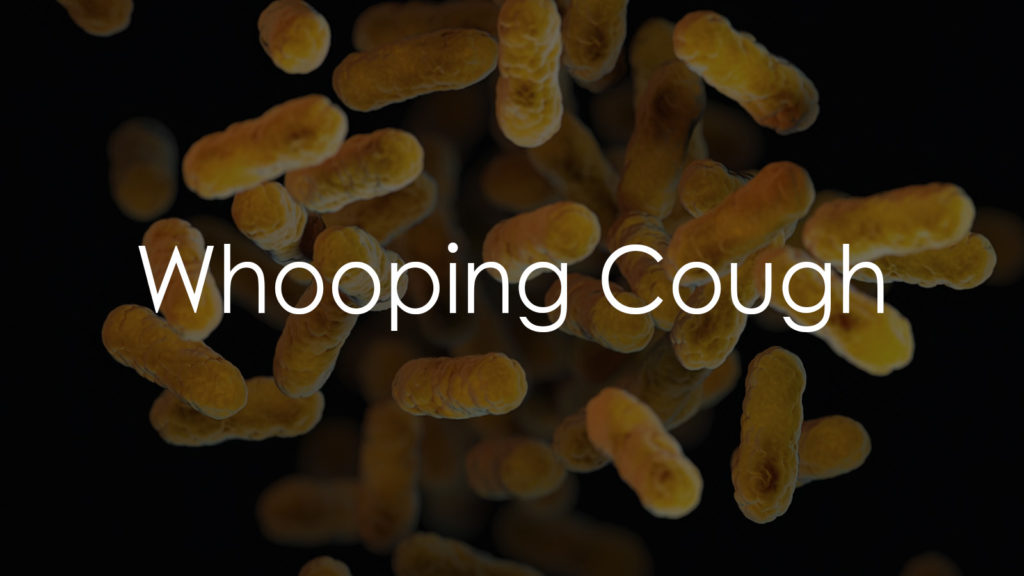Whooping cough, or pertussis, is a highly contagious respiratory infection caused by the bacterium Bordetella pertussis. Characterized by severe coughing fits followed by a distinctive ‘whooping’ sound, this disease poses a significant risk, especially to infants and young children. This article aims to provide a comprehensive overview of whooping cough, including its causes, symptoms, methods of diagnosis, treatment options, and preventive measures. Understanding whooping cough is crucial for effective management and prevention, particularly in vulnerable populations.

Causes
Whooping cough, also known as pertussis, is a highly contagious respiratory infection caused by the bacterium Bordetella pertussis.
- Bordetella Pertussis: This bacterium is the direct cause of whooping cough. It attaches to the cilia (tiny, hair-like extensions) in the upper respiratory system and releases toxins, leading to inflammation and respiratory symptoms.
- Transmission:
- The primary mode of transmission is through airborne droplets produced when an infected person coughs or sneezes.
- The bacteria can be spread easily, especially in close-contact settings like schools or households.
- Whooping cough is most contagious in the early stages of the infection, particularly before the onset of severe coughing fits.
Symptoms
Whooping cough symptoms typically develop in stages and can be severe, particularly in infants and young children.
- Early Stage (Catarrhal Stage):
- This stage resembles a common cold and includes symptoms like a mild cough, runny nose, sneezing, low-grade fever, and occasional mild coughing.
- The early stage usually lasts 1-2 weeks.
- Peak Stage (Paroxysmal Stage):
- Severe coughing fits characterize this stage, which can end with a high-pitched «whoop» sound during the next breath of air.
- Coughing fits can be severe and may lead to vomiting or exhaustion; in infants, there may be pauses in breathing (apnea).
- This stage can last for several weeks and is most responsible for the spread of the infection.
- Recovery Stage (Convalescent Stage):
- The cough gradually becomes milder and less frequent.
- Complete recovery may take months, especially in older children and adults.
- Complications:
- Complications can include pneumonia, dehydration, weight loss, seizures, brain damage (from lack of oxygen during coughing fits), and, in rare cases, death – particularly in infants.
It’s important to note that vaccinated individuals can still contract whooping cough, but their symptoms are often milder and less contagious than in those who are not vaccinated.
Diagnostics
Accurate diagnosis of whooping cough is crucial for effective treatment and preventing its spread.
- Clinical Assessment:
- Initial diagnosis is often based on the characteristic symptoms, especially the unique coughing fits and «whoop» sound.
- In infants and those who don’t exhibit classic symptoms, diagnosis can be more challenging.
- Laboratory Tests:
- A nasopharyngeal swab is the most common test used. It involves collecting a sample from the back of the nose and throat.
- Polymerase Chain Reaction (PCR) tests are effective, especially in the early stages of the disease.
- Culture tests can also be used, but they are less effective later in the disease course and can take longer to provide results.
Treatment
Early treatment is essential to reduce symptoms and prevent the disease from spreading.
- Antibiotics:
- Antibiotics, such as azithromycin, erythromycin, or clarithromycin, are most effective when started early in the infection. They can reduce the severity and duration of symptoms and help prevent transmission to others.
- In later stages, antibiotics may not alter the course of the disease but can still prevent spread.
- Supportive Care:
- This includes staying hydrated, eating small meals to avoid vomiting, and resting in a calm, quiet environment.
- Hospitalization may be necessary for infants and those with severe symptoms, especially to monitor breathing.
Prevention
Prevention strategies are key to controlling whooping cough outbreaks.
- Vaccination:
- The DTaP vaccine (for children) and the Tdap booster (for adolescents and adults) are highly effective in preventing whooping cough.
- Pregnant women are recommended to get the Tdap vaccine during each pregnancy to protect newborns who are too young to be vaccinated.
- Avoiding Exposure:
- Infants and other high-risk individuals should avoid contact with anyone who has a cough or other respiratory symptoms.
- Public Health Measures:
- Outbreak control involves identifying and treating cases promptly, vaccinating close contacts if necessary, and providing public health education about the disease and vaccine.
- Hygiene Practices:
- Regular hand washing and covering the mouth and nose when coughing or sneezing can help prevent the spread of the bacteria.
Through a combination of vaccination, prompt treatment, and public health measures, the impact of whooping cough can be significantly reduced.
Conclusion
In summary, whooping cough remains a public health concern due to its contagious nature and potential severity, especially in infants and unvaccinated individuals. Effective management of the disease relies on timely diagnosis, appropriate antibiotic treatment, and supportive care. Vaccination remains the cornerstone of prevention, significantly reducing the incidence and severity of the disease. Public health efforts, including vaccination campaigns and educating the public about disease prevention and the importance of vaccination, are essential in controlling the spread of whooping cough and protecting at-risk populations.